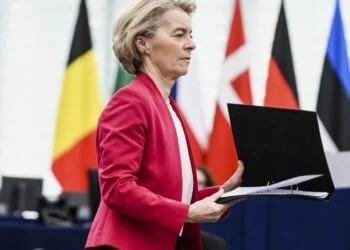BEIRUT (news agencies) — After Syria’s longtime autocratic ruler was toppled late last year, the man who led rebel groups to victory immediately faced a new challenge: unifying the country after more than a decade of civil war.
The peril and promise of Syria under interim President Ahmad al-Sharaa — the former leader of an Islamist insurgent group — were on dramatic display over the past week. After days of deadly sectarian violence, a diplomatic triumph united a powerful force in the country’s northeast with the new national army.
By Tuesday, it seemed as if Syria had made major steps toward quelling the tensions that erupted over the weekend. But analysts say the country still has a long way to go, and that the risks of sliding back into civil war, or partitioning the country along ethnic and sectarian lines, remain.
The “path to rebuilding trust” will require Syria’s new leaders to do more to “protect lives and foster a sense of unity among all communities,” said Ammar Kahf, executive director of Omran Center for Strategic Studies in Istanbul.
Building a stable, pluralistic society is also key to convincing Western countries to lift crushing economic sanctions that were placed on Syria during the brutal rule of former President Bashar Assad.
Beginning last Thursday, clashes between government security forces and armed groups loyal to Assad spiraled into sectarian revenge attacks that killed hundreds of civilians, most of them Alawites, a minority sect to which Assad belongs.
Government reinforcements eventually restored order, and calm appeared to hold by late Monday. That same day, al-Sharaa had signed a landmark pact under which Kurdish-led forces in the country’s northeast would be merged with the new national army.
The deal marked a major step toward unifying the disparate factions that had carved up Syria into de facto mini-states during its civil war. The civil war began in 2011 after the Assad government’s brutal crackdown on massive anti-government protests.
Most of the armed factions that fought to unseat Assad announced in January that they would join the national army. In practice, though, they have maintained their own leadership.
“This is not a professional army,” said Issam al-Reis, a military adviser with Etana, a Syrian research group. “In theory, there are plans to join the factions into an army and merge everybody together under the Ministry of Defense. But so far, in reality, on the ground, everybody is still under his own umbrella.”
On the other side, there are thousands of former soldiers from the disbanded Assad-era army who are now unemployed and “very easy targets” for local or international actors interested in upsetting Syria’s fragile stability, al-Reis said.
The sectarian violence over the weekend was difficult to contain, analysts say, because the government had to turn to a patchwork of undisciplined factions — including armed civilians — to combat pro-Assad militants who attacked security forces along the coast. Members of some of those factions launched bloody revenge attacks on Alawite civilians.
The violence only reinforced the “significant challenge to the Syrian (government’s) efforts to consolidate power,” said Kahf, of the Omran Center for Strategic Studies.
Unexpectedly, the violence appears to have expedited the deal to bring the Kurdish-led armed group controlling most of northeastern Syria, known as the Syrian Democratic Forces, under the umbrella of the national army.
The agreement came about when it did because al-Sharaa “needed to achieve a diplomatic victory” after the weekend violence damaged his image, said Ahmed Aba Zeid, a Syrian researcher. At the same time, the SDF calculated it could “achieve greater gains if it gave Sharaa this gift at this time,” he said.








 United Arab Emirates Dirham Exchange Rate
United Arab Emirates Dirham Exchange Rate
